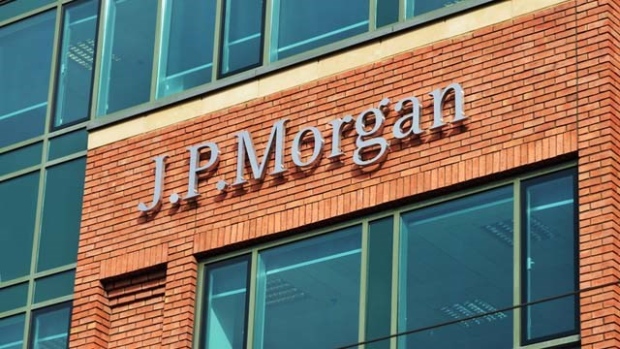Apr 13, 2016
JPMorgan profit falls nearly 7% as bank sets aside funds for sour oil loans
Reuters

JPMorgan Chase & Co, (JPM.N), the biggest U.S. bank by assets, reported a 6.7 percent drop in quarterly profit as costs to cover possible sour loans to troubled shale oil companies rose and revenue from trading and investment banking declined.
However, both earnings per share and revenue beat analysts' lowered expectations.
The bank's net income fell to $5.52 billion in the first quarter ended March 31, from $5.91 billion a year earlier. On a per-share basis, earnings fell to $1.35 from $1.45.
Analysts had expected earnings of $1.26 per share, according to Thomson Reuters I/B/E/S.
Total revenue fell 3 percent to $24.08 billion, beating the average estimate of $23.40 billion, while revenue from fixed-income trading - often JPMorgan's most volatile business - fell 13.4 percent to $3.60 billion.
JPMorgan is the first U.S. bank to report results since the Federal Reserve's decision in December to raise interest rates by 0.25 percentage points, the first hike in nearly a decade.
Bank of America Corp and Wells Fargo & Co, the second and third-biggest U.S. banks, report on Thursday.
A slide in commodity and oil prices, a slowdown in China, near-zero interest rates, mounting regulatory costs and hefty capital requirements have set up the banking industry for its worst start to a new year since the 2007-2008 financial crisis.
And while stock market activity picked up in March, that was not enough to make up for weak trading volumes during a volatile January and February.
Investment banking revenue fell 24.5 percent to $1.23 billion, even though JPMorgan topped the global league table with $1.22 billion in fees during the quarter, according to Reuters data.
Industry-wide, investment banking fees fell 29 percent in the period, the slowest first-quarter since 2009. Financial stocks were the worst performers in the S&P 500 index in the first three months of 2016, falling 5.6 percent compared with the overall index's rise of 0.8 percent. JPMorgan's stock fell 10.3 percent in the period - but the shares of its five big U.S. rivals fell by even more. The bank said its total non-interest expenses fell 7 percent to $13.84 billion, helped by lower legal costs.
Like other U.S. banks, JPMorgan has resorted to aggressive cost controls to underpin earnings over the past several quarters as revenue growth remains sluggish



